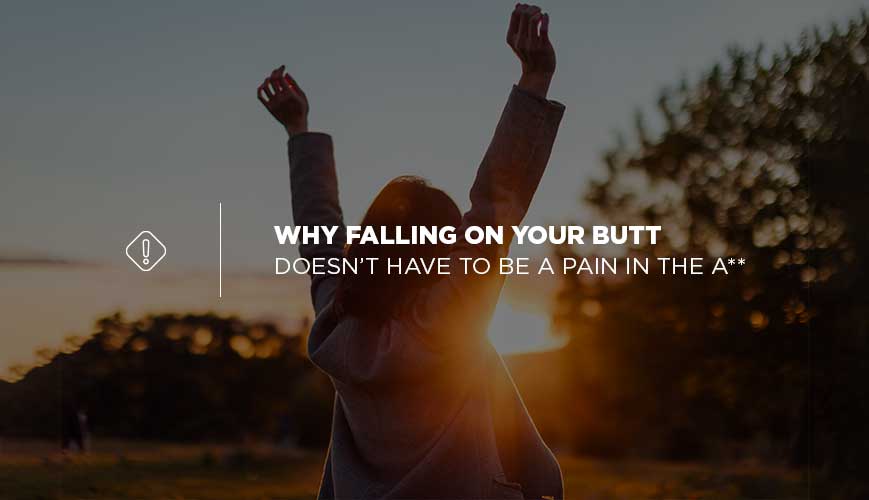Why Falling on Your Butt Doesn’t Have to Be a Pain in the A**
By Dr. Molly Casey

Falls can be a hard thing to deal with especially when landing square on your butt. Many folks can relate. Maybe it has been a slip on ice, or you fell out of a hammock, or you tripped backwards doing who knows what. When you fall down square on your butt -- as if you were sitting straight up -- can cause a lot of structural shifts. Symptoms from such a fall can remain for quite a while. There is help though.
Anatomy and What Happens?
Your whole spine and body can be affected when you fall or are injured in any way. For the purpose of this article I will address the effects of the low back and pelvis area.
Joints - Falling on your rear-end can make quite an effect on your body. When there is a direct impact in the seated position, numerous joints are at play. Joints are where two bones meet. The joints can be negatively affected by getting restricted, or stuck, in certain ranges of motion; this is known as a subluxation. The tissue in the joint capsule itself can be injured/torn and so can cartilage within the joints. These problems can result in symptoms such as inflammation and swelling as the joint tries to clean up and heal, and muscle spasms in order to guard and protect the joints.
Commonly affected joints in this type of fall are the lumbar facet joints (low back), the sacroiliac joints (think pelvis) and joints within the sacrum and coccyx. On a larger scale it can ultimately cause decreased range of motion, such as preventing bending forward, backward, and rotating and laterally bending to the side. It can cause problems sitting and standing for short or long periods and can inhibit lifting. So the effects can be far more than you may initially realize.
Bones - Bones can bruise. There are more nociceptors -- pain receptors -- in the outer lining of bone than any other place in the body. So when bones get bruised it can be quite painful for a good deal of time, sometimes longer than a break. Common bones that are bruised in this type of fall are sacral bones, the coccyx (tailbone), ilium (pelvis), lumbar vertebrae, and even the femur.
Ligaments/tendons - Ligaments are tissue that connect bone to bone in the joint; tendons connect muscles to bone. Both ligaments and tendons can be damaged in this type of fall. They can be torn, often with microtears (very small tears), and they can be stretched and strained. Tendons can become too taught as muscles spasm in order to guard and protect the affected area. All of these scenarios can increase inflammation and swelling because any can restrict or promote too much joint motion after the injury.
Can Chiropractic Help?
Can chiropractic help if you’ve suffered a fall like this, landing directly on your buttocks? Depending on the severity of the fall, it may. Chiropractic adjustments help restore joint range of motion, decrease inflammation, and can help with decreasing muscle spasms/guarding. Chiropractic care promotes optimal nervous system communication. Better nervous system communication will assist in all aspects of the body healing more fully in a faster manner. Chiropractic care is excellent for pain relief in these types of situations and is even quite helpful particularly for long-standing tailbone pain as a result of this type of fall.
Falling straight on your butt can hurt. It can also cause significant structural shifts and long-term pain. You need not suffer endlessly. If you, or someone you know, have had this happen, get to a chiropractor and see how they can help you, your spine, and your health.
The information, including but not limited to, text, graphics, images and other material contained on this page are for informational purposes only. The purpose of this post is to promote broad consumer understanding and knowledge of various health topics, including but not limited to the benefits of chiropractic care, exercise and nutrition. It is not intended to provide or be a substitute for professional medical advice, diagnosis or treatment. Always seek the advice of your chiropractor, physician or other qualified health care provider with any questions you may have regarding a medical condition or treatment and before undertaking a new health care regimen, and never disregard professional medical advice or delay in seeking it because of something you have read on this page.